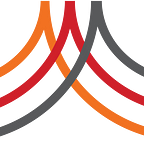Get to Know: Wudasse Berke, User Experience Specialist
Joined Everbridge
May 2016
Location
Pasadena
What do you do at Everbridge?
I’m a user experience, or UX, specialist, which means I work with our product managers and engineers to translate the technical aspects of what we build into the user interface. I think of my job as being the voice of the customer. I try to understand how they’re using Everbridge and the environments they’re in, and then design to support that.
I’m usually involved in multiple projects that are at different stages, so every day is different. I work mostly on our IT Alerting, Incident Communications, and Crisis Commander products, but sometimes I branch out and contribute to the mobile platform or help develop our internal and support tools.
Who do you collaborate with, and how?
There are three of us on the UX design team itself. I’m in Pasadena; another designer is in Lansing, Michigan; and our principal designer, Dave, is in Burlington, Massachusetts. We also have some UX-inclined developers in China. I started out at the headquarters in Burlington, working next to Dave, and I would always ask him to look over what I was designing and give me feedback. I asked to transfer to Pasadena last year because I’ve always wanted to live in California, and Dave and I have been able to maintain our relationship remotely. We still have regular one-on-ones, but it’s not just me reporting on what I’m doing and getting guidance. He asks for my advice, too, which is pretty cool.
“I think of my job as being the voice of the customer. I try to understand how they’re using Everbridge and the environments they’re in, and then design to support that.”
Outside our team, we work most with product managers and engineers. The first step is usually to meet and understand the goals and requirements for the feature they’re building. Then I create wireframes that show what I think the screens should look like and how things should flow. I also make sure all the visual aspects are in line with the rest of our site. Then I’ll go back to the product managers and engineers. We’ll talk about whether it’s realistic to build the product as designed and keep iterating from there.
We also talk with the customers themselves, especially early on. It’s important to engage them before everything is polished, because we want their input to guide our decisions. There are always things we might not think about that can help make the product better.
What were you doing before Everbridge, and why did you join?
I first joined Everbridge as an intern at the Burlington office, while I was still in grad school studying human-computer interaction. Interning was great because I got to contribute to real projects and work alongside the rest of the team. I also had a lot of independence, although I could always ask for help when I needed it. So I already knew this was a place where I had value. They offered me a full-time job at the end of the internship, and I accepted.
The other thing I liked about Everbridge was that the work truly matters. Our customers depend on us to help them save lives, and that guides a lot of what we do as designers. Our number one priority is making the product as easy to use and reliable as possible, because our users are already in a stressful situation. We don’t want them looking at a screen that makes it worse. If our design can save them a minute or even a few seconds, that could allow them to save a life.
What kinds of challenges does your team face?
I think the biggest challenge right now is keeping up with how fast we’re growing. As Everbridge acquires new companies, we need to make sure our approach and design language are consistent, no matter which product you’re using. That requires a lot of communication. Since the UX team is relatively small, we do have some autonomy as far as the creative tools we choose, and we’re developing new strategies for sharing information and making our work more accessible to each other and across teams. That way, when we start working on a new project, we have an immediate frame of reference, and it’s easier to adapt.
“We challenge assumptions, and we make changes when we get new information — that’s all because everyone really cares about making the product better.”
The other challenge in terms of growth is adding to our team — but that also means a lot of opportunity. When we have more designers, we can specialize more. So there will be more chances to focus on visual design or interaction or whatever interests us most.
What would you tell a UX designer who’s considering a role at Everbridge?
I’d tell them adaptability is important, because you’re moving in and out of projects with different engineering teams. You have to understand each of their processes and cadences and make yourself part of them rather than disrupting them. The nice thing is that you pick up a lot of best practices that you can apply to the next project.
I’d also say that people at Everbridge are very open and accessible. They’re always happy to help. It’s a pretty relaxed environment, which is nice for me, because I like being able to manage my own schedule. At the same time, everyone is so dedicated. We sometimes have debates about what should or shouldn’t be done; we challenge assumptions; we make changes when we get new information — and that’s all because everyone really cares about making the product better. We’re all working toward the same goal.
